|
|||||||||||||||||||||||||||
|
|||||||||||||||||||||||||||
|
|||||||||||||||||||||||||||
|
|||||||||||||||||||||||||||
|
|
|
|

SEPTEMBER 2006 |
|
|
EDITORIAL: TACKLING THE HEALTHCARE MESS  Members of the medical profession are enormously respected in the Indian American community. As the Indian American community tries to find its bearings in mainstream politics, Indian American doctors have led the way. Members of the medical profession are enormously respected in the Indian American community. As the Indian American community tries to find its bearings in mainstream politics, Indian American doctors have led the way. While the community has taken pride as Indian American medical doctors have hobnobbed with federal and state lawmakers, the time has probably come to ask whether the impressive clout of this professional fraternity is being used to further anything beyond its own narrow group interests. Few analysts question the fact that the American healthcare system faces a crisis. Costs are ballooning, a substantial part of the population does not have health insurance, and insurance accounting is a logistical nightmare. Yet where is the voice of the profession when it comes to suggesting solutions to this national crisis? To be fair, the response of the mainstream medical profession has not been particularly edifying, either. This is why we find the efforts of a Bay Area-based neurologist so remarkable. Dr. Subroto Kundu, MD, is one of those rare medical doctors willing to stick his neck out and willing to call a spade a spade. He has planned an open meeting inviting experts and lawmakers like Rep. Pete Stark, D-Calif., and general members of the public to explore possible solutions. Dr. Kundu is willing to at least look at the problem honestly and explore possible solutions. In this issue, we carry an interview with Dr. Kundu where he offers his frank views. A relatively simple, even innocuous law has become the bane of corrupt bureaucrats in India. It’s called the Right to Information Act, and you would be hard-pressed to find any power-hungry Indian bureaucrat or politician who loves it. Now the law gives something to the people which is theirs by right in any democracy: The right to hold government officials accountable. It is not a novel idea, but crafty bureaucrats and politicians in India have hitherto paid lip service while using all means at their disposal to avoid true accountability. As soon as it became law, bureaucrats began to feel the heat. Ordinary people began to investigate what was happening to files and public money and pretty soon people found that they could actually hold bureaucrats accountable. However, soon the empire struck back. The government proposed a number of amendments to take the bit of the law, including attempts to take a number of official proceedings out of the public purview and making the proposed Information Commission subservient to the government. Sandeep Pandey, a Magsaysay Award-winning activist and a Siliconeer editor, joined a mass movement against the government effort. He went on a five-day fast, relenting only after Left politicians promised not to allow the amendments to pass. Ultimately, the government gave in to public pressure, and the amendments are on the back burner. We carry an essay by Sandeep this month. In today’s world of sectarian schisms and fundamentalist religious fervor, Bangladesh presents an interesting case study. A predominantly Muslim country, it embraced secularism as official government policy when it became independent in 1971 after a bloody war and made the song of a non-Muslim, Rabindranath Tagore, its national anthem. Many years have passed since then, and Bangladesh’s commitment to secularism has come under a cloud after Islam was accepted as the state religion, but it is also true that Tagore is still revered in Bangladesh, as is Kazi Nazrul Islam, both of whom were in their writings champions of an inclusive Bengali identity that had little tolerance for sectarian or religious divisions. Rezwana Choudhury Bannya and Khairul Anam Shakil are two Bangladeshi artists who epitomize this cultural spirit, and they performed in Berkeley, Calif., recently. Not only are both wonderful artists, but their message of a cultural identity that transcends religious and political divides is a soothing, reassuring antidote to the increasingly shrill, acrimonious and menacing schisms that divide the world. Presented by the Berkeley-based nonprofit International Institute of Bengal Basin, the concert cast a spell on the audience where the artists not only sang some beautiful songs of Bengal’s two finest poets, but also provided a fascinating commentary on their lives and work. In the end, perhaps the most effective way of combating sectarian strife, whether in the domestic or international arena, is by promoting the transcendent bonds of culture that bring us together, focusing on one of the more humane aspects of what Nobel laureate economist Amartya Sen has called a multiplicity of identities that define each one of us. Do drop us a line with ideas and comments about how we can make Siliconeer better serve you. |TOP|
COVER STORY: The Health Care Mess: Understanding the Basics Most analysts agree the American health care system is facing a crisis. Costs are ballooning, a chunk of the population has no health insurance and the paperwork is a nightmare. But what is to be done about it? In an exclusive interview with Siliconeer, Bay Area-based neurologist Dr. Subroto Kundu, MD, says that it is essential for ordinary people to understand the fundamental financial and political dynamics of how the health care system works before they can intelligently assess what can be done or whose interest any proposed legislation serves. Dr. Kundu hosts a public seminar this month with invitees including Rep. Pete Stark, D-Calif., to discuss the issue. 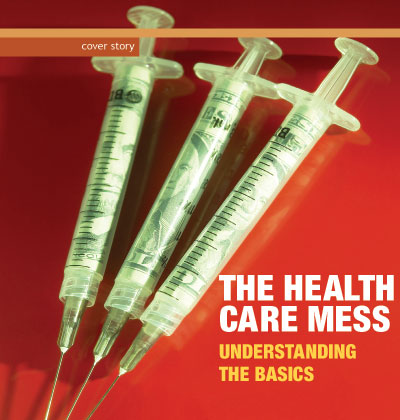 Why did you decide to do this seminar? Why did you decide to do this seminar?It has to do with the appreciation of the problem and dealing with the frustration of the inability to express opinion. Even though it might appear that we have wide access to the media, in practical terms you will find that it really is difficult to project a logic or a thought process which unfortunately has to be funded. It does turn out that molding public opinion is a very difficult task. It also turns out that public opinion tends to be molded by people who have the financial ability to do so and that turns out to be the industry. So here you are as a practicing physician, you are doing your job, you are trying to do the best you can, you are up against the constraints of the system at every point on a day-to-day basis. You are confronted with the problems faced by patients, you are confronted with the difficulties of management of a medical practice, and essentially of all aspects of functioning of a physician, and you recognize the points where these problems are created mainly by the industry and yet you have this frustration that you cannot express yourself in saying that such and such changes would benefit everybody concerned. 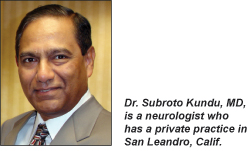 What kind of changes are you exploring which is not getting out there because it hurts established interests? What kind of changes are you exploring which is not getting out there because it hurts established interests?It all boils down to the control of money. It is shameful that this idea is sold to everybody else as a control of medical care. It is not a control of medical care, it is control of the money. So the physicians, even though they are part of the process of medical treatment, they actually are not in the control of the industry because the industry, like any other industry, is controlled by the people who control the finances, and physicians happen to be a small speck on that landscape, because they are nowhere in the chain of command that controls the money. Who controls the money? That’s the problem. The money is controlled by the insurance companies. So whatever you see as being the ills of the system comes back to the issues of the control of money by the insurance companies who are actually the final repository of all the problems and therefore would also be the point to look at for solutions. Somewhere in there, one would assume, that there would be independent regulatory bodies, namely the government. However, there is a problem here. I believe that when you look at the whole process of forming a legislation, the input that is given to legislators are given by people who have the time and energy to bring that message. It does turn out, therefore, that those kinds of inputs are again funded by the industry. This process of legislation is in fact feeding information into the people who make the laws that ultimately will translate into our day-to-day life and therefore it is incumbent upon people to give feedback to their legislators. For example people like being Congressman Pete Stark and Ellen Corbett, who is running for state senate. These are people who will be legislating. So let them hear from real patients, real doctors and other people who are independent and who will give what they perceive and let that be countered if that is to be countered by whatever the industry has to say. That would be my way of bringing it out to the legislators and at the same time I think that there is in fact a bigger goal for me, because I am aware that at least the people that I had personally invited, Congressman Stark and our state senator-to-be Ellen Corbett, these are people who are already to a large extent aware of the problem. My problem is that people in general are completely unaware of the problem because ultimately I find that it doesn’t matter who you are trying to influence, the most important are the people themselves who are actually the recipient of the bad system and yet they have no clue about where the solution is going to come from. Why is that?
SUBCONTINENT: The Right to Know: Keeping Government Accountable With the Right to Information Act, people have realized that they can actually assert their rights as masters of democracy, which they are. So it is no wonder the ruling elites tried to make the act toothless, writes Sandeep Pandey, who went on a five-day fast to protest the attempt. 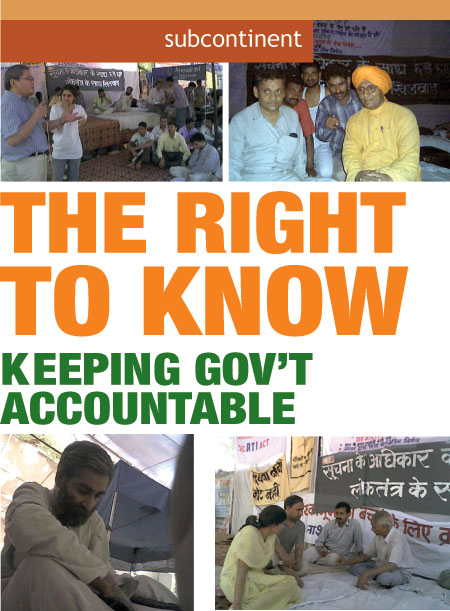 (Clockwise from top): Protesters from all over India join Magsaysay Award winner Sandeep Pandey (l) who went on a five-day fast to protest the proposed ammendments to the Right to Information Act; (Bottom, left): Sandeep Pandey is India Editorial Consultant for Siliconeer. He won the Ramon Magsaysay Award in 2002. Over the last month or so we witnessed an upsurge of protest from the people and people’s organizations over the proposed amendments by the Union Cabinet to the Right to Information Act, 2005 from all over the country. The people had realized the importance of this Act. This Act, for the first time since independence, gives people the right to change the equation between themselves and the ruling elites. The governed can now ask questions about virtually every aspect of governance from the class which has claimed to govern them for 59 years and created a mess in every department and ministry. The people have realized that they can actually assert their rights as masters of democracy, which they are, but the ruling elites never let them be. They are filled with a sense of empowerment and the bureaucracy for the first time is feeling under pressure to be accountable to the people. Nobody believed that the bureaucracy and politicians could be reined in but the Act has provided a glimpse of that possibility and therefore people are elated. People began filing applications under the RTI Act asking questions about various things, from accounts of village panchayats to enquiries of progress on their pending files in government departments. Since there was a time limit within which the bureaucracy had to respond, otherwise it faced the risk of a penalty, things started moving. Consider the following examples: Santosh Bahadur Singh, an advocate in Rae Bareli, Uttar Pradesh, was trying to get an illegally built structure on the Collectorate campus removed. He had successfully gotten a court order in his favor but was not able to get the administration to comply with the order. He filed an application under RTI Act asking why the court order was not being complied with and who was responsible for negligence. The district magistrate of Rae Bareli had to get the construction demolished overnight. Santosh Bahadur Singh proudly video recorded the demolition exercise. Ajay Kumar Singh, a disabled person in Varanasi, had obtained a job with the Nagar Nigam but he was not being asked to join. He had been running around for about a year and a half but his plea fell on deaf ears. He filed an application under the RTI Act asking why he was not being asked to join in spite of having secured a job with the Nagar Nigam and who would be held responsible for the loss that he had suffered because of this. An attendant from the office went searching for him and told him to come and join from the next day. When a former inspector general of police S.R. Darapuri in Lucknow obtained the details of expenditure of 3 MP and 8 MLA Local Area Development funds using the RTI Act, it was discovered that our people’s representatives buy a laptop computer at about three times the price for which it is available in the market! Gross corruption is being uncovered. This is the power of the RTI Act. Fearing that the people would use the RTI Act to take away what the bureaucracy has considered its prerogative for all these years — to take decisions in arbitrary manner — they hastened to clamp down the Act. The bureaucracy came up with seven proposed amendments to the Act which were approved by the Union Cabinet. They did not want file notings, cabinet decisions, information related to processes of examinations and selections to be made public. They wanted the identities of officials conducting enquiries, submitting recommendations, etc., to be kept secret. They did not want the basis for transfers and postings of officials to be revealed to the people. In matters in which decisions were under consideration they wanted not just file notings but any kind of information to be excluded from the Act. And the most damaging proposed amendment was to take away the independence of the Information Commissions. Information Commissions presently enjoy the same status of autonomy as Election Commissions. However, the proposed amendment said that in case of any dispute the decision of the government was to be considered final. The amendments proposed by the government intended to make the Act toothless. As MP from Deoria Mohan Singh put it, the government should have avoided the trouble of trying to explain the amendments and instead brought a one-line motion to the Parliament saying that they intended to withdraw the Act. People were quick to realize the implications of the proposed amendments even though the Prime Minister’s Office issued a clarification that the amendments were meant to bring about more transparency. There was a backlash in the country and people protested vigorously. Some politicians, former judges, serving honest public servants and one Information Commissioner spoke out against the attempt to tamper with the Act. The government would have been foolish to go ahead with tabling the proposed amendments in the Parliament. It appears that for the time being they have unofficially dumped the “amendments.” This is a victory of the democratic spirit that is India. The politicians and bureaucrats must know that people of this country do not tolerate arbitrary decisions for very long. They have fought passionately to save their democratic right in the past and will do so once again if the need arises. The people with mala fide intentions who think they can mislead the common people have hereby been sent a clear message. If they make an attempt to dilute the Act in any way, now or later — inside or outside the Parliament, they will be met with serious resistance. The illiterate and half literate masses of India have demonstrated, time and again, that you can trust their political consciousness. |TOP| NEWS DIARY: Roundup  Bismillah Khan Dies | Macaca Flap Could Cost Sen. Allen the Race | Bangla Mine Row | Doctor Couple Donates $1M to UC Merced | Farmer Suicides | Goodbye, Prince of Kolkata? | Alzheimer’s Hope Bismillah Khan Dies | Macaca Flap Could Cost Sen. Allen the Race | Bangla Mine Row | Doctor Couple Donates $1M to UC Merced | Farmer Suicides | Goodbye, Prince of Kolkata? | Alzheimer’s HopeBismillah Khan Dies 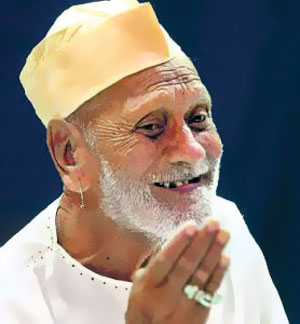 Ustad Bismillah Khan, who died recently, gained worldwide acclaim for playing the shehnai for more than eight decades. Ustad Bismillah Khan, who died recently, gained worldwide acclaim for playing the shehnai for more than eight decades. He was credited with helping the shehnai attain a higher status in Indian classical music and taking it to a world stage. It had earlier considered to be an accompanying instrument. In 2001, he was awarded India’s highest civilian honor, the Bharat Ratna. The shehnai is traditionally played at Indian weddings and ceremonies and its high-pitched notes and heart-tugging sound are considered auspicious. A devout Muslim, Khan was a symbol of India’s religious pluralism and a symbol of harmony for people of different faiths. He was often seen playing at various temples and on the banks of the holy river Ganges in the northern Indian city of Varanasi, his home town. He was particularly proud of playing outside the famous Vishwanath temple in Varanasi. Born in March 1916 in a small village in Bihar, Khan belonged to a family of court musicians. His ancestors were musicians in the princely state of Dumraon in Bihar. He started his formal training under his uncle, Ali Bux Vilayatu, who was a shehnai player attached to the Vishwanath temple. Khan’s 1937 performance at the All India Music Conference in Kolkata brought shehnai to the centre stage of Indian classical music. Among the high points in his career was when he played at Delhi’s Red Fort on the eve of India’s Independence in 1947. Since the time of India’s first Prime Minister, Jawaharlal Nehru, Khan performed every Independence Day and state-owned television has shown his live performance immediately after the prime minister’s address to the nation. |Back to NEWS Diary| |TOP| Macaca Flap Could Cost Sen. Allen the Race 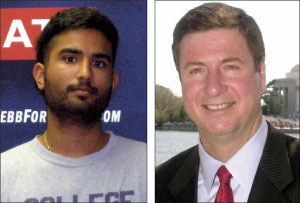 S.R. Sidarth (l) and Sen. George Allen It was an obscure comment made in an obscure part of the country. The audience actually laughed at the comment, but now the person who made it is in deep trouble. Sen. George Allen, R-Va., referred to University of Virginia student R.S. Sidarth as a “macaca,” a derivation of the French word macaque, or monkey, at a campaign meeting Aug. 12. Sidarth was at the rally to videotape his speech for the campaign of Allen’s Democratic opponent Jim Webb. In Francophone African countries, the word is used as a racial slur against Africans. Allen has a close relative who spent in the North African Francophone country Tunisia. Allen has subsequently apologized, but the issue has spiraled into a big political controversy with his poll numbers taking a precipitous dip. A poll in that showed him with a hefty lead over Democratic opponent Webb, now a poll shows Webb ahead for the first time, though the difference is within the margin of error. Several other polls have shown the difference between the two contestants to have shrunk dramatically. Meanwhile, his comment has drawn sharp editorial rebuke. The huge spate of publicity has also played a role. A News-7 SurveyUSA survey found that a majority of Virginians (56 percent) had heard about Allen’s remarks to the Webb campaign volunteer. Of the 309 people who were familiar with the story, two-thirds (67 percent) thought it was inappropriate for Sen. Allen to refer to the college student of Indian descent as “macaca,” but the respondents were more evenly divided over whether the comments were a racial slur. In a tough uphill battle that the Republicans face to keep control of Congress, Allen has found to his lasting regret that even a comment made in jest can come back to haunt the person. Activists and minority rights advocates say that is exactly the way it should be. |Back to NEWS Diary| |TOP| Bangla Mine Row 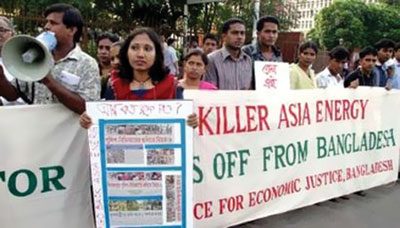 A Dhaka rally protests the killing of people in police firing during a demonstration over a coal mine planned by a British company. A deal has been reached in Bangladesh over a controversial coal mining project that has sparked clashes. Protesters and negotiators say that under the terms of the agreement, the four-day protest against the British firm Asia Energy will be halted. In return, negotiators are to recommend to the government abandoning the mining project in the north of the country. Families of victims killed and hurt in the clashes will also be compensated. Protesters are angry over the mining project, at Phulbari in Dinajpur district, 220 miles north-west of capital, Dhaka, which they say will displace thousands of families and damage the environment. Asia Energy says it will adequately compensate those affected if allowed to develop the mine. Asia Energy is planning to operate an open-cast coal mine which will entail relocating an estimated 40,000 people from their homes. The proposed mining area will affect more than 100 villages - among them communities of the Santhal, Munda and Mahali tribes - and the destruction of acres of fertile agricultural land. |Back to NEWS Diary| |TOP| Doctor Couple Donates $1M to UC Merced 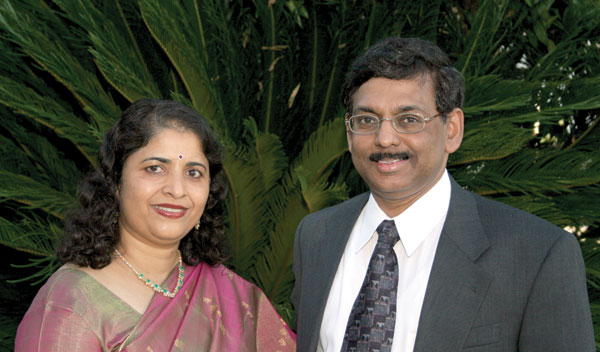 Dr. Madhu Kris and Dr. Vijaya Tangella Merced physicians Dr. Madhu Kris and Dr. Vijaya Tangella has donated $1 million to the University of California at Merced to start a scholarship fund for high-achieving students and to build a new lecture hall, according to UC Merced. They have dedicated the gift to their parents, Nagaratnamma and Venkat Krishnaiah and Lakshmi Kanthamma and Tangella Pattabhi Ramayya. The couple’s gift will endow four four-year scholarships. The supplementary scholarships will be awarded based on merit and without regard to need. Jan Mendenhall, director of development and university relations at UC Merced, said that part of the Kris-Tangella gift will also go towards the construction of a new lecture hall. The university has generated $61.8 million in private donations since fundraising began in 1998. In the past year, it has reported $19.6 million in private gifts. The Kris-Tangella donation has been accompanied by several other generous donations from Indian American families in the past year. Hanimireddy Lakireddy and his family recently gave a $1 million naming gift for the campus’ Lakireddy Auditorium, and Rajender and Jhansi Reddy gave a $1 million donation for the campus’ student health center. UC Merced brings the University of California’s historic commitment to excellence in teaching, research, and public service to the state’s great San Joaquin Valley. UC Merced opened Sept. 5, 2005, as the tenth campus of the renowned University of California system and the first American research university to be built in the 21st century. Chancellor Carol Tomlinson-Keasey has headed the university since 2000, and announced that she will step down from the position this fall. UC Merced is now conducting a search for a new Chancellor. Like all campuses in the UC system, UC Merced operates under the direction of the UC President and is governed by The Regents of the University of California, a 26-member board established under the California Constitution. UC Merced offers a range of undergraduate and graduate programs and is projected to grow to a 25,000-student enrollment at full build-out by approximately the year 2030. |Back to NEWS Diary| |TOP| Farmer Suicides  An Indian farmer reflects on his drought-hit land. More than 200 farmers have committed suicide in India’s Maharashtra state since Prime Minister Manmohan Singh visited in July, campaigners say. August alone saw 110 despairing farmers in India’s cotton belt take their lives — the highest monthly figure since the debt crisis began nine years ago. Activists put the rising deaths down to official apathy and farmers’ despair. Singh announced a relief package worth $815m. But many farmers say help has yet to reach them. The state’s cotton-growing region of Vidarbha is home to 3.2 million farmers, more than 90 percent of whom are heavily in debt. They owe money to government banks as well as to local money lenders. On average, one Vidarbha farmer commits suicide every eight hours. As part of the package, the prime minister announced the waiver of interest payment on loans to banks, but most farmers have taken substantial loans at very high interest rates from private moneylenders too. Kishor Tiwari, who has been fighting for the farmers’ rights for several years, says despair and hopelessness, borne out of official apathy, is the main reason for the increase in suicide cases. He says the Indian government needs to take emergency measures to tackle the problem which is acquiring epidemic proportions. The suicides have left thousands of widows in the region, many of them between the ages of 19 and 25 with two to three children. |Back to NEWS Diary| |TOP| Goodbye, Prince of Kolkata? 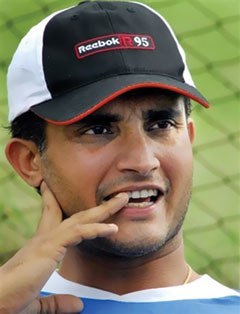 Sourav Ganguly Cricket history is replete with improbable comebacks but the national cricket selectors may have ended Sourav Ganguly’s long and checkered career by ignoring him for the ICC Champions Trophy. The country’s most successful captain ever finds himself left out in the cold after a high-voltage confrontation with coach Greg Chappell and poor form (average just 4.8 runs) during his county stint in England this summer. One of the most stylish Indian left-handers to grace the field, Ganguly has scored 10,123 runs from 279 one-day internationals at an average of 40.65 after making his ODI debut against the West Indies in 1992. His career seemed headed to doom before he resurrected it with an enthralling century in his Test debut at Lord’s in 1996. Later the same year, he was asked to open the innings in one-dayers with Sachin Tendulkar and together they formed one of the most destructive opening pairs in cricket history. Entrusted with captaincy in 2000 after Tendulkar stepped down, the “Prince of Kolkata,” as he was affectionately known, took on the job with aplomb, his natural aggression adding spice to his role as the leader of the side. Credit should also go to the Bengal batsman for putting together a strong team packed with youngsters. He backed to the hilt players like Harbhajan Singh and Virender Sehwag who have made no secret of the fact that they miss Ganguly in the dressing room. Under Ganguly, India started winning Test matches abroad -- a distant dream for most of his predecessors. One of the factors that contributed to India’s success was Ganguly’s aggressive streak, which at times got on to the nerves of rival skippers, most notably Steve Waugh’s. It was this instinct which perhaps saw India make it to the World Cup final in 2003 for the first time in 20 years and win its first ever series against arch-rivals Pakistan the following year. The abiding images will be his classic cover drives which prompted a commentator to say that on the off side there is God and then Ganguly. |Back to NEWS Diary| |TOP| Alzheimer’s Hope  A split-view image showing PET scans of a normal brain (l) and a brain with Alzheimer’s disease. British and Indian scientists are examining ancient Indian ayurvedic medicine for possible use in drugs to treat Alzheimer’s disease. Researchers say ayurveda works in the same way as conventional drugs for boosting mental agility in the disease. They found that the plants used in ayurveda acted to improve memory and concentration in Alzheimer’s sufferers. Alzheimer’s disease is a progressive, degenerative and irreversible brain disorder. There is no known cure. The disease causes intellectual impairment, disorientation and eventually death. Researchers from King’s College, London and Jadavpur University in Kolkata, studied five plants commonly used in ayurvedic medicine. They found that the plants acted to prevent the breakdown of neurotransmitters, improving memory and concentration in people with Alzheimer’s disease - the most common form of dementia. The scientists are now trying to identify the chemical compounds responsible so they can be used to develop more effective drugs. Ayurveda is a 5,000-year-old Indian tradition of herbal and alternative medication. Ayurvedic medicine uses herbs and spices like basil, turmeric, garlic, ginger and aloe vera, as well as yoga exercises, to treat physical and psychological problems. The causes of Alzheimer’s disease are not yet fully understood. There are some very rare inherited cases caused by genetic mutations, but these account for around 1 percent of people with Alzheimer’s. A variety of drug treatments have been shown to benefit patients. None are a cure, but they can temporarily relieve some of the symptoms in some patients. |Back to NEWS Diary| |TOP| |